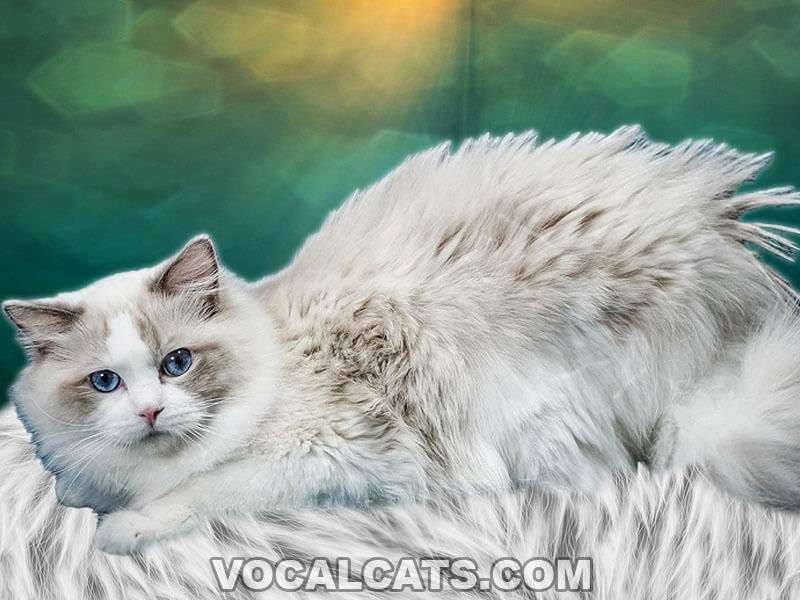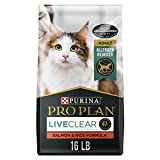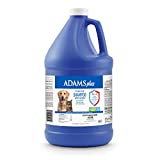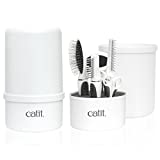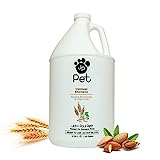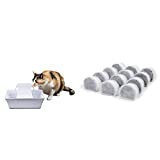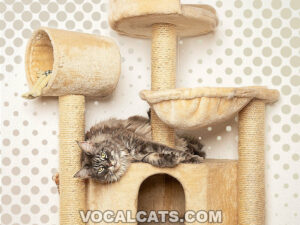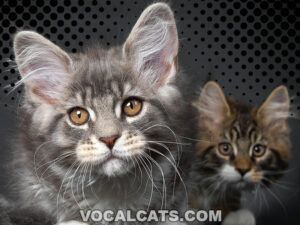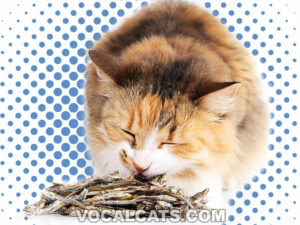Do Ragdoll Cats Shed? Yes, Ragdoll Cats do shed; however, the amount of shedding depends on several factors including climate, diet, brushing routine, health, and their environment. Because Ragdoll Cats are long-haired felines, they would definitely shed, which is why you need to brush their coats regularly and get them used to it too.
Named after the way they go limp when you hold them, Ragdoll Cats are a popular cat breed among those that loves long-haired cats. These feline companions have silky medium-length coats and bright, stunning blue eyes, which makes you want to hold them all day long.
Unlike other cats, Ragdoll Cats don’t have an undercoat, which is just another layer of hair underneath their outer coat. For this reason, Ragdolls shed relatively less than other cat breeds. However, because of their medium to long hair, they still go through the shedding process for various reasons that we’ll discuss in this article. So keep reading to learn more!
Contents
- Do Ragdolls shed?
- When do Ragdoll Cats shed a lot?
- Why do Ragdolls shed a lot?
- How much do Ragdoll Cats shed?
- Do Ragdoll Cats Shed more than other cats?
- How can I make my Ragdoll shed less?
- Are Ragdoll Cats good for allergies? Should I get a Ragdoll if I am sensitive to Cat fur?
- Are Ragdoll Cats hypoallergenic?
- Can Ragdolls have short hair?
- Do both Long Haired Ragdoll Cat and Short Haired Ragdoll shed?
- Are Ragdoll Cats high maintenance?
- Ragdoll Cat grooming and Ragdoll haircut
- Ragdoll Cats and hairball issues
- Which cat breed sheds the least?
- So, do Ragdoll Cats Shed?
- Related Questions
Do Ragdolls shed?
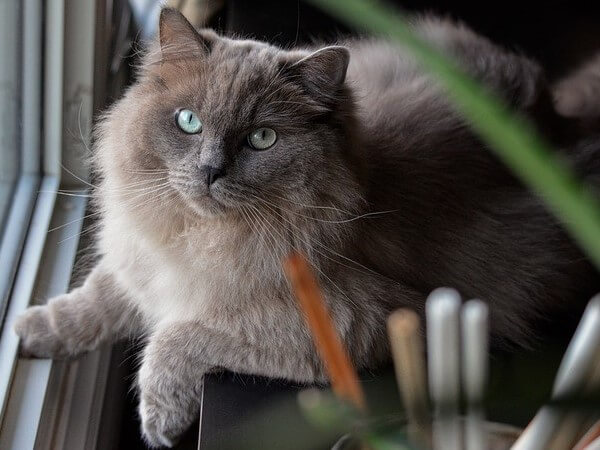
Yes, Ragdolls do shed. That’s because Ragdoll Cats have a silky, soft, and long-haired coat that feels like rabbit fur. This coat usually grows thicker in the winters (known as the winter coat) to provide them warmth, and sheds in the summers so they can stay cool.
Their necks also sport a fluffy ruff that grows and becomes more defined with age. The ruff, along with the long-haired coat, contributes to Ragdoll shedding.
It’s important to note that not all Ragdolls have the same coat or color. You can find four different types of coats on Ragdoll Cats:
1. Traditional
These are purebred Ragdoll cats with classic blue eyes and lush coats. Traditional Ragdolls can come in various colors, but they are pure white right after birth. They change color once they are a few weeks or four days old.
2. Sepia
Unlike traditional Ragdolls, Sepia Ragdolls can have various eye colors. Their coats are the thickest and softest compared to other coat types.
3. Mink
These Ragdolls have fluffy tails and coats thicker than traditional Ragdolls. Although their colors might be similar to traditional Ragdolls, Mink Ragdolls are darker and richer, and the kittens are born with their coat colors. They also have blue-green or aqua eyes.
4. Solid
Solid Ragdolls have thick fur and solid coat colors that are darker and deeper than other types.
Ragdoll Cats with the thickest coats, such as Sepia Ragdolls, experience more shedding than other types. On the other hand, practically hairless felines don’t shed much. These include Sphynx, Cornish Rex, Devon Rex, and Peterbald.
Cats with double coats are prone to excessive shedding as well.
So, what is a double coat?
A double coat consists of two layers: an outer coat and an undercoat. The outer coat is made from long hairs, while the undercoat is a layer of short and dense hair that protects the cat, acting as insulation.
In the winter seasons, the undercoat grows thicker to provide warmth to the cat. Conversely, during the summer, cats will shed most of their undercoat to stay cool.
Since Ragdoll Cats don’t have an undercoat, it means that they shed less as compared to other cat breeds.
With that said, it is worth noting that Ragdoll Cats do mainly have long-haired overcoats and they go through a hair growth cycle. The phases of cat hair growth is as follows:
- Anagen phase: Growth of new hair.
- Catagen phase: Hair stops growing after it has reached full length.
- Telogen phase: Hair stays at rest (not growing or shedding) on your feline friend’s skin.
- Exogen phase: Hair starts to shed.
As we can see, it’s natural for Ragdoll Cats to shed, no matter if they are short-haired or long-haired. Their coat will at some point reach the exogen phase where they will shed to naturally get rid of the dead hair. If not, they will suffer from skin irritation.
When do Ragdoll Cats shed a lot?
Like humans, cats also require a healthy diet and regular grooming to look their best.
Ragdoll Cats can shed a lot for various reasons. Here are five (5) reasons below:
A malnourished Ragdoll Cat would shed a lot of hair.
On the other hand, Ragdoll Cats also undergo seasonal shedding, which is normal and part of their lives. For example, your fuzzy friend will shed more during the summer and spring seasons to get rid of the heavy overcoat so their bodies can get some air and cool down.
Ragdoll Cats also shed more during the fall to prepare their overcoats for fresh hair growth in the winter.
However, the amount of shedding depends on the environment and the climate in which your Ragdoll Cat resides.
If you keep your cat indoors most of the time, exposed to constant heating in the winter and air conditioning in the summers, it can throw your cat’s shedding schedule off-balance. In such a case, your cat can shed more frequently than usual.
Why do Ragdolls shed a lot?
Some Ragdolls shed a lot, while others don’t shed as much. It isn’t easy to pin down a single factor responsible for shedding in your cat. If your Ragdoll cat is shedding a lot, there can be multiple reasons, such as diet, pregnancy, stress, parasites, age, or even lack of grooming.
Let’s discuss these six (6) reasons below that can cause Ragdoll Cat shedding:
1. Diet
Sometimes, when you experience a lot of hair fall, you need to check whether you are eating a balanced diet that fulfills your dietary requirements.
In the same way, your Ragdoll Cat also needs a diet makeover if he is shedding frequently.
You should add more protein and fat to your cat’s diet to overcome this issue. This is because hair needs protein to grow and stay shiny and healthy.
Similarly, fats like omega-6 and omega-3 promote healthy hair growth and reduce the amount of hair cats shed.
2. Stress
If you have recently moved houses, changed your Ragdoll Cat’s routine, or started to live in a very noisy place, you can expect your Ragdoll Cat to be stressed out by his new environment.
This can make your feline friends obsessive in grooming himself more (through licking). As a result, this can cause hair loss, irritable skin, or bald patches. It can also trigger a psychological response that can result in excessive shedding.
New and other pets in the house can also make your fuzzy companion nervous and stressed if he is not familiar or comfortable with them.
3. Pregnancy
A pregnant Ragdoll Cat may not always have the essential minerals and vitamins she needs to keep her overcoat healthy. Additionally, pregnancy can cause many hormonal changes within the body and this can lead to hair loss.
After birth, the shedding should return to its normal rate, and your feline friend’s hair should grow back.
4. Age
As your cat ages, she tends to spend less time grooming herself to get rid of the dead hair. This can actually lead to more shedding, and your Ragdoll Cat’s fur can also become matted, which can cause even further shedding.
5. Parasites
If your kittens are infested with fleas, they will scratch themselves often to get rid of the fleas. Scratching also provides a temporary relieve from the itchy flea bites.
DON’T MISS: What Do Cat Fleas Look Like To The Human Eye? With Pictures!
This further escalates hair loss resulting in noticeable bald patches and red spots.
To prevent this, try to keep your Ragdoll Cat clean by using a damp cloth to wipe their skin and coat and help get rid of the fleas. You can also use cat shampoo that can destroy fleas and ticks on the skin and coat.
It’s important to note that you should avoid bathing your feline companions every day. Doing so can strip off their natural oil and cause further dry, itchy, and inflamed skin.
When it comes to flea or tick treatment, we highly encourage you to speak with your vet and ask about the best way to treat your fuzzy friends with fleas, ticks, or other parasites.
READ ALSO: Do Ragdoll Cats Scratch Furniture?
6. Lack of Grooming
Ragdoll Cats require regular brushing to get rid of dead hair and dander (dead skin cells). Although our four-legged friends like to groom themselves, it can become hard for old or overweight cats to reach certain areas.
For this reason, you should step in and help your Ragdoll Cat comb away the dead coat which will help him shed less.
How much do Ragdoll Cats shed?
Compared to other types of cats, Ragdoll Cats fortunately do not shed as much. They are known as moderate shedders because they don’t have an undercoat.
Unlike other cats that lose a lot of hair all year round, Ragdoll Cats only shed heavily during the spring or fall season or when they go through any of the condition we’ve discussed above.
Ragdoll Cats with the thickest outercoats, such as the Sepia Ragdolls, shed the most, while others, such as the new Ragdolls, don’t shed as much. It really depends on their coat type.
Do Ragdoll Cats Shed more than other cats?
When compared with other feline breeds, Ragdoll Cats do shed more than short-haired and hairless cat breeds, such as the Sphynx and the Cornish Rex. This is due to the fact that most Ragdoll Cats are long-haired and they sport an outer coat.
Ragdoll Cats also sheds the same amount of fur as medium-to-long haired cats, such as Siberian Cat and American Bobtails.
You can minimize shedding by adding more protein to your kitty cat’s diet, regularly brushing his coat, and taking care of his hygiene.
Below are more ways to help your precious Ragdolls shed less.
How can I make my Ragdoll shed less?
Although Ragdoll Cats do not shed as much when compared with other cats, there are many reasons why they may begin to shed more, as we discussed above.
This can be a nuisance to you and your family members because no one likes to sweep or mop their floors or vacuum their carpets constantly.
However, if you don’t mind vacuuming your home regularly, be sure to get a vacuum cleaner with a HEPA filter.
The HEPA filter helps eliminate allergens by trapping microscopic particles, including dust, pollen, pet dander, and even some bacteria and viruses, as air passes through the vacuum cleaner.
This high-efficiency filtration system captures 99.97% of particles as small as 0.3 microns, preventing them from being released back into the air and thus creating a cleaner, less allergenic environment.
So here are seven (7) ways to prevent your Ragdoll Cat from shedding a lot.
1. Regularly brush your Ragdoll Cat’s overcoat
Use a wide-toothed steel comb or a wire-bristle brush (slicker brush), or a Furminator de-shedding tool to brush your Ragdoll’s coat daily.
You can also use grooming gloves that can work like combs. This is especially helpful if your fur baby has had a bad experience with a comb. By using the grooming gloves, your four-legged friends won’t be as afraid since it will look like you are stroking him.
The grooming gloves can also easily reach your feline family member’s underside and other hard to reach areas.
Whether you’re using a brush or a pair of grooming gloves, both of these methods will help get rid of the excess hair and eliminate any knots and matting.
2. Provide your cat a healthy diet
If your Ragdoll Cat doesn’t get enough protein and fat in her diet and is always munching away on harmful human food or table scraps, she will suffer from long-term health issues and lose her natural beauty.
Try to incorporate appropriate amounts of protein, omega-3, and omega-6 fatty acids in your feline friend’s diet so that her hair and skin remains glossy, thick, and healthy.
3. Give your Ragdoll Cat a warm bath at least once a month
Some Ragdoll Cats may take well to a good warm bath. A bath also ensures that your fuzzy friends come out clean and all the dead hair and dirt is washed away.
Try to incorporate this into your cat’s routine from when she is just a kitten. This way, she’ll learn to love the water and bath time will be a peaceful one. There will be no resisting and no water fights.
Be sure to use a gentle cat shampoo and conditioner so her overcoat can have a nice sheen and is moisturized and healthy. Afterwards, wrap her up in a towel and try to dry her off quickly so she doesn’t feel cold.
4. Add supplements to your cat’s diet
Adding supplements to your feline friend’s diet can also help minimize the shedding. If you notice your Ragdoll Cat shedding more than usual, speak with your vet and ask if adding supplements to her diet may help.
Your vet will suggest the best and high-quality supplements that you can get for your Ragdoll from a nearby pet store.
It’s important to note that supplements are not meant to replace your fuzzy friend’s regular diet. It’s a way to fill in the necessary nutrients that their natural diet doesn’t fulfill.
Most supplements will contain nutrients like omega-3 and omega-6 fatty acids and these two types of fatty acids can help with healthy and moisturized skin and coat in cats.
5. Make sure your Ragdoll is hydrated
Your kittens can also shed a lot if they are dehydrated or thirsty. Without enough water consumption throughout the day, it can lead to dry skin and hair loss.
Make sure to always keep your kitties’ water bowl full of fresh and cool water. The water bowl should be located in an area of your house where it is easily accessible to your fluffy fur babies.
This area should also be odor-free, clean, and relatively quiet. Avoid putting their water and food bowl near their litter tray.
This way, your kitties can easily access it throughout the day whenever they are thirsty or need to drink water.
If your kitty cats don’t like to drink water, there are ways to make drinking water fun.
For instance, our feline friends are attracted to moving things. If you notice that they always like to drink water from the tap or faucet, you could get a cat water fountain.
Cat water fountains are just like other water bowl except it may be more fun and exciting to our cats. They provide our kittens with fresh running water instead of the still standing water.
The small fountain is located in the middle and it helps to keep the cool water running and circulating.
Your four-legged friends can either drink the water as it falls from the small fountain or simply from the bowl.
6. Look out for infection
As stated earlier, a flea-infested cat can shed more because of constant scratching and licking.
It’s always best to tackle the root of this problem and take your cat to see a vet. A veterinary professional is always the best person to guide you in this situation.
The veterinarian will know how to get rid of the fleas or ticks in this case and provide you advice and guidance on what preventative measures to take so your precious kitties can avoid this issue in the future.
DON’T MISS: Cat Scratching Litter Box Excessively: 10 Reasons Why & What To Do!
7. Remove the source of stress
As we mentioned earlier, if a Ragdoll Cat is under a lot of stress, she can easily trigger a stress response that makes her shed more. Excessive licking due to stress also forms bald patches on her skin.
To prevent this, remove the source that’s causing your feline friends stress.
Are Ragdoll Cats good for allergies? Should I get a Ragdoll if I am sensitive to Cat fur?
Not exactly. Although Ragdoll Cats don’t shed as much as other cat breeds, they still shed enough to cause Ragdoll Cat allergies.
This is because Ragdoll Cats produce the Fel d 1 protein, which is responsible for causing a lot of allergies.
Even if you or your family members aren’t exposed to Ragdoll Cats’ fur that much, you can still come in contact with their dander and saliva, both of which have the Fel d 1 protein and can trigger feline allergies in people.
In fact, all cats produce the Fel d 1 protein regardless of which cat breeds they fall in and what their physical characteristics are. Also, all cats are different. One cat may have a higher Fel d 1 levels than another cat.
If you or one of your family members are sensitive to cat allergy, don’t fret. Investing in an air purifier with a HEPA filter can help control the amount of allergens in your home.
Are Ragdoll Cats hypoallergenic?
No, unfortunately, Ragdoll Cats are not hypoallergenic. While they might not shed as much hair as other cats, they still produce the Fel d 1 protein which can cause various allergic reactions in people, including the following:
- Red patches.
- Sneezing.
- Coughing.
- Breathing problems.
- Runny nose.
- Eczema.
As we’ve mentioned above, the Ragdolls’ dead skin cells also contain the Fel d 1 protein. These dead and dry skin cells are called dander, which can easily become airborne and affect people with mild to severe allergies.
Can Ragdolls have short hair?
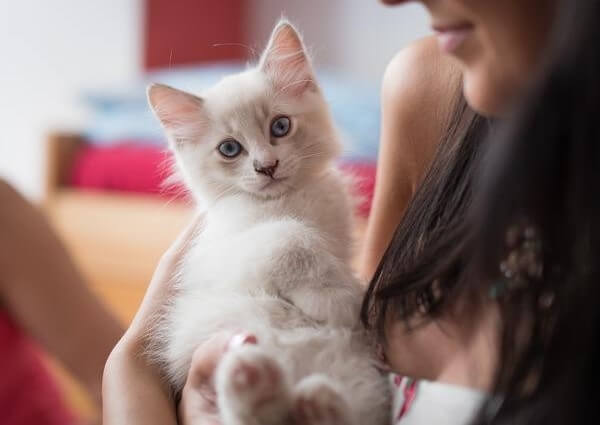
A purebred Ragdoll Cat has medium to long hair and does not have short hair. A short-haired Ragdoll is usually a crossbreed with a different type of breed, such as the British Shorthair.
If you prefer a short-haired Ragdoll, it’s important to note that you will most likely get a crossbred Ragdoll, not a purebred one.
RECOMMENDED: British Shorthair Ragdoll Mix (Complete Guide)
Additionally, it could also be the age of your Ragdoll. Ragdoll kittens naturally have shorter hair. It usually take more than 4 to 5 months for their hair to fully grow out to its long length.
WANT MORE INFORMATION? Check out Does A Shorthair Ragdoll Cat Exist?
Do both Long Haired Ragdoll Cat and Short Haired Ragdoll shed?
All cats shed to get rid of the excess dead hair. A long-haired Ragdoll Cat sheds more than a short-haired Ragdoll cat. In the same way, different types of Ragdoll cats have different shedding patterns.
A fluffy Ragdoll cat will shed more, such as Mink Ragdoll, compared to traditional Ragdolls. A long-haired Ragdoll sheds more during the spring and summer seasons or when she is pregnant, old, or stressed.
Other reasons that Ragdolls with long hair shed a lot include a lack of grooming on your end or not taking care of your cat’s diet, as we’ve discussed earlier.
Are Ragdoll Cats high maintenance?
Yes, Ragdoll Cats can be quite high maintenance when it comes to grooming, brushing, and making sure they physically and mentally stimulated.
Ragdoll Cats are very playful creatures and want constant human companionship. Because they have long hair, they need frequent brushing. Doing so can help prevent tangle and matting which can lead to a lot of shedding. For this reason, you should brush your Ragdoll at least twice or three times a week.
Although Ragdolls have great teeth, you should still brush their teeth at least 2 to 3 times a week. This helps to keep their pearly whites clean.
When brushing your Ragdoll’s teeth, stick to using only feline-friendly toothpaste which contains an enzymatic formula to help break down plaque, prevent tartar buildup, and to keep their gums healthy.
Another reason why Ragdoll Cats are high maintenance is that they also have sensitive stomachs and require a specific diet which can be time-consuming.
Ragdoll Cat grooming and Ragdoll haircut
A Ragdoll Cat needs regular grooming to control her shedding and to maintain her healthy overcoat. They don’t usually need a haircut. However, you should always trim their nails.
You should start brushing your fluffy companions as early as their kittenhood years. This way, they can get used to it and won’t resist you or make a fuss.
Brush your kittens’ fur slowly when doing so for the first time. After a few strokes, you’ll want to give your kitties a treat to keep them calm and docile.
Brushing is a great way to get rid of dead hair so your feline friends won’t ingest them while grooming themselves. There have been many cases of cats grooming themselves and ingesting hairballs.
These hairballs can get stuck in their throat or in their stomach. This is concerning because the hairball can be a choking hazard or lead to intestinal tract blockage (which may require immediate surgery to remove).
When grooming your fluffy friends, avoid forcing them to stay still as you brush. If they have to move around, take a little break and come back to it. As always, we highly recommend that you have those treats ready!
Ragdoll Cats and hairball issues
When your cat licks or grooms himself, he may consume some of that loose hair. That’s because the natural movement of his tongue may push the loose hair down his throat and into his stomach.
This hair accumulates in the cat’s stomach, forming a hairball. In many cases, the hairball isn’t round but rather long and cylindrical. Unfortunately, Long-haired Ragdolls have a greater chance of developing hairballs.
It’s important to mention that our fluffy friends’ stomach can not digest the hair properly since the Ragdolls’ hair is made from a tough protein called keratin. Therefore, there’s two natural way for a Ragdoll Cat to get rid of the hairball. They are:
- By vomiting or,
- Passes through in the feces.
If the hairball gets stuck in the intestinal tract and refuses to come out either way, your furry friends may experience constipation, loss of appetite, lethargy, and retching.
If you notice any of these symptoms, we highly recommend that you contact your cat’s veterinarian as soon as possible. This requires immediate medical attention and the vet will have to properly diagnose the intestinal blockage through a series of tests including:
- X-rays.
- Complete physical examination.
- Ultrasound.
- Bloodwood.
If the vet determines that there is a hairball stuck inside your four-legged friends’ intestines, surgery may be necessary to remove the hairball.
As we can see, it’s crucial that cat owners brush their feline friends’ coat regularly to remove excess loose hair. This will help prevent ingestion of loose hair during their own grooming and licking.
Also, be sure to give your fuzzy friends a balanced diet to prevent excessive shedding.
Which cat breed sheds the least?
The Sphynx cat breed sheds the least because they have very fine layer of hair that is almost not visible. Such cats need extra protection from harsh climates and a more rigorous grooming routine.
Although Sphynx cat may shed the least, they are still not considered 100% hypoallergenic. That’s because their dander, saliva, and even the natural oil found on their skin can contain allergens.
So even if Sphynx cats do not have hair, they may lick their skin when they naturally groom themselves. During this grooming process, the Fel d 1 protein in their saliva will transfer onto their skin. This allergen can then trigger an allergic reactions to those who have feline allergies.
So, do Ragdoll Cats Shed?
As we can see, Ragdoll Cats do shed like most other medium to long-haired cats. To keep your house clean and prevent cat fur from getting everywhere, brush your Ragdoll Cats regularly and bath them at least once a month.
There can also be different reasons your Ragdoll Cat is shedding more frequently. Try to pinpoint the root of the problem and then find a solution to prevent your cat from shedding a lot. As always, we highly recommend that you speak with a veterinary professional to seek their professional advice and suggestions.
Yes, there are Short Haired Ragdoll Cats. This could be the result of having a purebred Ragdoll Cat crossbreed with a different cat breed that has shorter hair, such as the British Shorthair.
Another reason is if you have a Ragdoll kitten. That’s because Ragdoll kittens are still growing and developing so they haven’t grown out their long hair just yet. It usually takes a Ragdoll kitten 4 to 5 months to have her hair grow out fully to her signature long length.
Related Questions
Ragdoll Cats have medium to long hair, which means they undergo more shedding than short-haired cat breeds. They shed more during the spring and fall seasons when they have to get rid of their thick overcoat or when they’re preparing to grow a fresh one.
No, unfortunately a Ragdoll Cat is not hypoallergenic. While Ragdolls may not shed as much hair as other cat breeds, they do have a medium to long coat that sheds heavily during the spring and fall seasons. Also, they produce the Fel d 1 protein in their saliva and dander which can trigger allergic reactions in some people. As we can see, it’s not just the fur, but also the cat’s dander and saliva that we must take into consideration when deciding whether the feline is hypoallergenic or not.
Overall, Ragdolls can be high maintenance because you’ll need to groom, brush, and keep them mentally and physically stimulated every day.
Due to their medium to long fur, you’ll want to brush their fur regularly with a slicker brush to prevent matting and tangles.
You’ll also want to get feline-friendly shampoos to keep your furry friend’s skin and coat clean, healthy, moisturized.
Additionally, keep in mind that the amount of shedding can also depend on a number of factors including where you live, the temperature, and the overall environment.
Yes, there are Short Haired Ragdoll Cats. This could be the result of having a purebred Ragdoll Cat crossbreed with a different cat breed that has shorter hair, such as the British Shorthair.
Another reason is if you have a Ragdoll kitten. That’s because Ragdoll kittens are still growing and developing so they haven’t grown out their long hair just yet. It usually takes a Ragdoll kitten 4 to 5 months to have her hair grow out fully to her signature long length.
DISCLAIMER: THIS WEBSITE DOES NOT PROVIDE MEDICAL ADVICE
The information, including but not limited to, text, graphics, images and other material contained on this website are for informational purposes only. No material on this site is intended to be a substitute for professional veterinary advice, diagnosis, or treatment. Always seek the advice of your veterinarian or other qualified health care provider with any questions you may have regarding a medical condition.
Resources:
https://en.wikipedia.org/wiki/Ragdoll
https://ahcfargo.com/client-resources/breed-info/ragdoll/
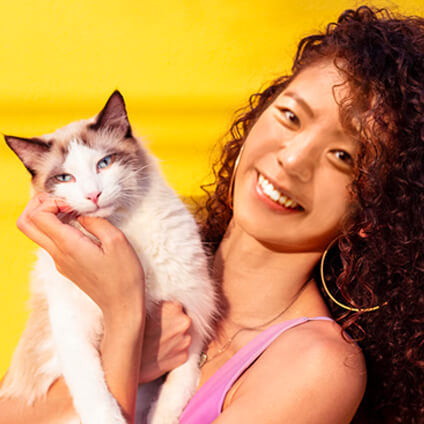
With over five years of specialized experience as an animal writer, my expertise lies in cat nutrition, health, behavior, grooming, and training. I am dedicated to delivering helpful and informative content that caters to the well-being of our feline friends. My primary goal is to empower pet owners with knowledge and ensure our feline companions thrive in health and happiness. In my free time, I love volunteering at local cat rescue centers.
